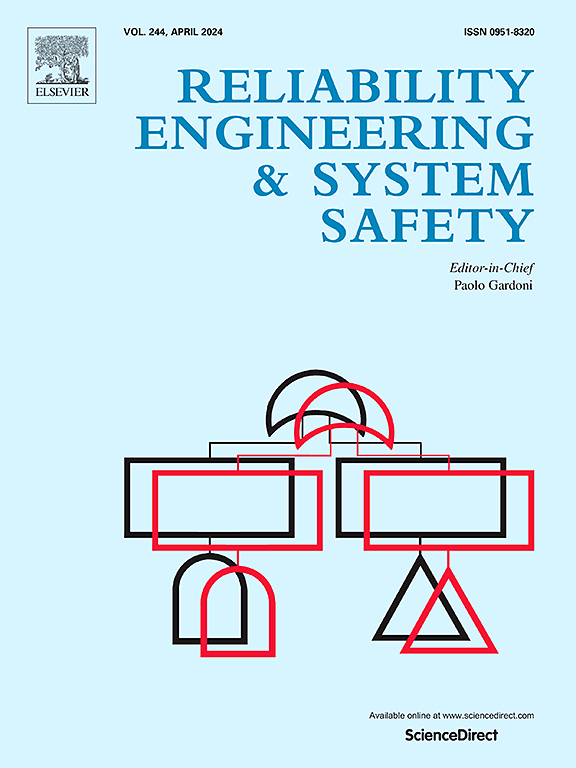锂离子电池健康状态预测的改进timegan数据增强方法
IF 11
1区 工程技术
Q1 ENGINEERING, INDUSTRIAL
引用次数: 0
摘要
锂离子电池是零排放氢电发电机(GEH2)的关键部件,准确的性能预测对于确保最佳运行和实现有效的预测性维护至关重要。数据驱动模型由于具有较高的准确性和较短的开发时间,在预测锂离子电池的健康状态(SOH)方面变得越来越重要。然而,在像GEH2这样的混合动力系统中,当燃料电池提供大部分电力时,电池经常处于非活动状态,可用的电池数据是有限的。这种数据稀缺性对实现准确的SOH预测提出了重大挑战。为了解决这一挑战,我们提出了一种新的数据增强方法,该方法将时间序列生成对抗网络与变压器和门控循环单元集成在一起,以增强数据可用性并提高预测精度。这种新方法增强了模型在多变量电池参数中捕获长期时间依赖性的能力,同时有效地解决了不规则的时间间隔,这是现实世界电池数据集中的一个常见挑战。我们使用来自四种不同的GEH2电池的真实工业数据集和来自公开可用的NASA数据集的另外两种电池来评估所提出的方法。使用长短期记忆(LSTM)模型对各种数据增强技术生成的增强数据进行训练,评估SOH预测的性能。结果一致表明,我们的方法优于所有竞争方法,突出了其增强锂离子电池数据的卓越能力。这些发现突出了我们的方法在提高预测准确性和稳健性方面的有效性,使其非常适合实际电池应用。本文章由计算机程序翻译,如有差异,请以英文原文为准。
A modified TimeGAN-based data augmentation approach for the state of health prediction of Lithium-Ion Batteries
Lithium-ion batteries are critical components of zero-emission electro-hydrogen generators (GEH2), where accurate performance prediction is essential for ensuring optimal operation and enabling effective predictive maintenance. Data-driven models have become increasingly prominent for predicting the State of Health (SOH) of lithium-ion batteries due to their high accuracy and reduced development time. However, in hybrid systems like GEH2, where the battery frequently remains inactive while the fuel cell supplies most of the power, the available battery data is limited. This data scarcity presents a significant challenge for achieving accurate SOH prediction. To address this challenge, we propose a novel data augmentation approach that integrates Time-series Generative Adversarial Network with a Transformer and a Gated Recurrent Unit to enhance data availability and improve prediction accuracy. This new approach enhances the model’s ability to capture long-term temporal dependencies within multivariate battery parameters while effectively addressing irregular time intervals, a common challenge in real-world batteries datasets. We evaluated the proposed approach using real-world industrial datasets from four distinct GEH2 batteries and two additional batteries from the publicly available NASA dataset. The performance of SOH prediction was assessed using a Long Short-Term Memory (LSTM) model trained on augmented data generated by various data augmentation techniques. The results consistently demonstrate that our approach outperforms all competing methods, highlighting its superior ability to enhance data for lithium-ion batteries. These findings highlight the effectiveness of our approach in enhancing predictive accuracy and robustness, making it highly suitable for real-world battery applications.
求助全文
通过发布文献求助,成功后即可免费获取论文全文。
去求助
来源期刊

Reliability Engineering & System Safety
管理科学-工程:工业
CiteScore
15.20
自引率
39.50%
发文量
621
审稿时长
67 days
期刊介绍:
Elsevier publishes Reliability Engineering & System Safety in association with the European Safety and Reliability Association and the Safety Engineering and Risk Analysis Division. The international journal is devoted to developing and applying methods to enhance the safety and reliability of complex technological systems, like nuclear power plants, chemical plants, hazardous waste facilities, space systems, offshore and maritime systems, transportation systems, constructed infrastructure, and manufacturing plants. The journal normally publishes only articles that involve the analysis of substantive problems related to the reliability of complex systems or present techniques and/or theoretical results that have a discernable relationship to the solution of such problems. An important aim is to balance academic material and practical applications.
 求助内容:
求助内容: 应助结果提醒方式:
应助结果提醒方式:


